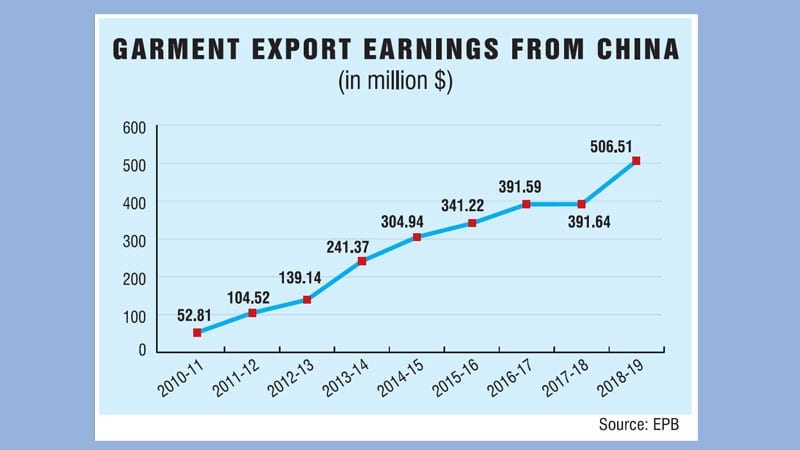Exports of garments to China are steadily on the rise thanks to the duty-free market, incentive packages and high cost of labour there, say industry insiders. In the last decade, garments shipments to Chinese markets grew by 860 per cent to USD 506.51 million. Back in 2010–11, export earnings were only USD 52.81 million. Based on year-on-year calculations, FY2018–19 saw a growth of 29.33 per cent, according to the Bangladesh Export Promotion Bureau. Export items to China include cotton-based apparel like trousers, vests, breeches, jerseys, anoraks, T-shirts, shirts, singlets, windcheaters for men and boys, and pullovers and blouses for girls and women. Siddiqur Rahman, former president of the Bangladesh Garment Manufacturers’ and Exporters’ Association (BGMEA), told The Independent that rising production costs in China have handed Bangladesh the opportunity to export cotton-based apparel. China is reluctant to engage in the manufacture of low-end readymade garments since it is moving towards building high-tech industries, said Rahman. Besides, the Chinese government discourages textile manufacture in their country because of environmental concerns, he added. China is reducing its investment in apparel factories at the domestic level. Instead, it is relocating manufacturing operations to countries like Bangladesh, Cambodia, Vietnam, and India. “China has already invested a large sum in the Bangladeshi apparel sector.

We welcome new Chinese investment, but Chinese factories have to be fully compliant factories that are certified by global buyers,” said Rahman. “Lead times are pivotal for us in this era of fast fashion. The distance between China and Bangladesh is less compared to European countries and the United States. This has led us to increase the quantity of shipments to China,” said BGMEA director Md Mohiuddin Rubel. “We need to utilise the geographical closeness with China to swell our readymade garment exports”, Rubel said. The stimulus package from the government for exporting to new markets appears to be working, he added. Besides, since 2011, the Chinese government has provided Bangladesh a preferential trade benefit.Bangladeshi exporters enjoy duty-free access when exporting more than 5,000 products, which is the case for apparel exports. This has helped boost garment exports to China, Siddiqur said. Bangladesh presently houses 90 LEED-certified garment factories, including 24 platinum-rated buildings, as per data from the United States Green Building Council (USGBC).
















